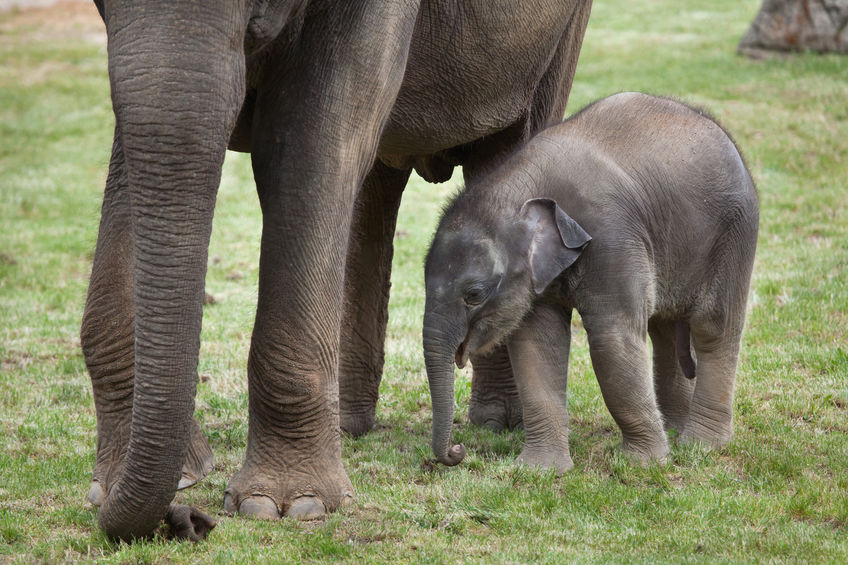Imagine driving from the heart of a city for 50 miles and you find elephants blocking your road. That was the childhood I grew up in, a stone’s throw away from some of the most dense tropical forests of Asia.
Though the forests were lush and the environment pleasant, there was always a constant stress on the local communities to fight poverty and attain financial stability. This was the story of India during the 1990s.
Two decades later, India has not only grown economically stronger, but has also managed to save many of its species through effective, data-driven conservative programs — and is continuing to find ways to save species that are in danger.
Conservation in the midst of Rapid Economic Growth
Before the year 2000, India was still a young developing country. 45% of the population was under poverty during the year 1993. By 2011 (the latest census), only 21% of the population remained under the poverty line. Nevertheless, it is estimated that around 218 million people in India still live in “extreme” poverty (less than $1.90 per day).
Between 2011 and 2015 alone, more than 90 million people were lifted out of extreme poverty. India’s GDP in 2000 was around US $468 Billion. By 2019, the GDP was valued at US $2.8 Trillion. That is a phenomenal achievement.
It would be easy to assume that such a rapid economic progression and the expansion of human settlements would have had a negative impact on India’s wildlife.
But that wasn’t the case. It was during the same years that India managed to implement strict conservation measures that would reap immense benefits on even a short-term basis.
According to a recent forest census, there has been a growth in forest area across the country. Among the many success stories of wildlife conservation were the increase in the tiger population. There were only 1,411 tigers in the year 2006. This number more than doubled during the next 12 years and by 2018, there were 2,967 tigers.
The southern Indian tropical forests of Western Ghat mountains host a significant proportion of those tigers, including those in the Mudumalai Tiger Reserve. The Mudumalai Tiger Reserve is part of the Nilgiris region which also hosts a number of hill towns that acts as commercial hubs for the produce in the region.
Mudumalai Tiger Reserve and Nilgiris Economy
I have been a frequent visitor to the reserve. It is home to Elephants, Tigers, Leopards, Black Panther, Sloth Bear, Indian Spotted Deer, Sambhar Deer, Jackals, Indian Wild Dogs, Indian Bison (Gaur), Rhesus Monkey, Grey Langur Monkeys, Nilgiri Langur, Slender Loris, and avian fauna like the Peacocks, Malabar Parakeet, the Great Indian Hornbill, the Malabar Grey Hornbill, Whistling Thrush, Babblers, etc.
A month ago, we were able to witness big herd of elephant on the National Highway that runs across the reserve. Mudumalai has a unique elephant training and rehabilitation camp, which trains captive elephants to capture rogue (ones that repeatedly kill humans) elephants. Often times, four of these trained elephants are required to subdue and transport one rogue elephant, a common sight in the villages of Nilgiris. The centre rehabilitates injured wild elephants and also fosters orphaned wild elephant calves.
The reserve is also planning to establish a Vulture rescue, rehabilitation and breeding centre in the scenic Sigur plateau region. The plateau is one of the last remaining habitat for three critically endangered vulture species – the white-rumped vulture, the red-headed or asian king vulture and the long-billed vulture. Besides the plateau is also visited by the Egyptian vulture, Cinereous vulture, and the Himalayan griffon vulture.
All these conservation activities and the associated success happened simultaneously with a growth in the region’s economy during the past two decades. Wildlife tourism is one of the biggest revenue generators here and it is situated not far from India’s silicon hub city of Bangalore, attracting tourists all around the year.
The human settlements in the surrounding hill regions are an ideal altitude for farming carrots, beetroots, potatoes, cabbages, lettuce, strawberries, tea, and other fruits that fetch a high profit. The vegetables from the regions are in high demand across the country.
The case of Mudumalai is just one example. There are other reserves where the wildlife authorities have done a phenomenal job. The Sahyadri Tiger Reserve (State of Maharashtra) is another example where human-wildlife conflict has been reduced, while allowing both village population and animal population to thrive. I have witnessed it first hand during my work as a wildlife ecologist in these forests of Maharashtra, which is the state with the highest GDP (US$400 billion) in the country. The Mudumalai tiger reserve is also situated in a state with India’s second highest GDP (US$270 billion).
So, these are not wildlife reserves in the middle of nowhere. They are situated very close to rapidly growing economical hubs and yet managed to successfully conserve species of importance. In fact, one can argue that the GDP growth has enabled these economies to conserve forests better and avoid excessive deforestation.
In conclusion, yes, the country has been able to able to balance development and conservation. India has been a shining example of how economic growth and conservation efforts can happen simultaneously, with the former helping in the implementation of the latter.
We must move beyond the common misconception that development destroys wildlife and look for examples like Mudumalai and other reserves in India, which can be replicated in forests elsewhere in the world.
